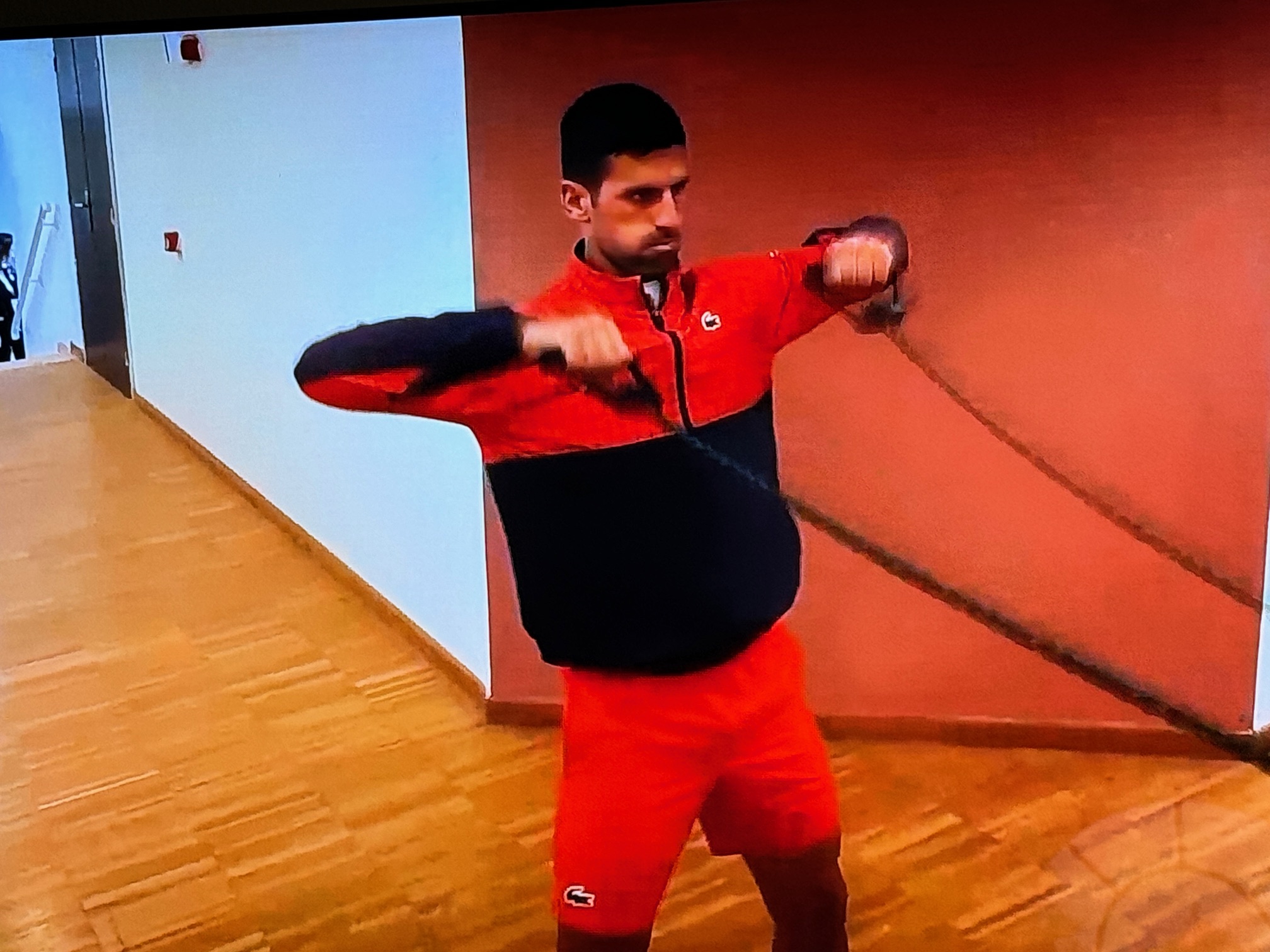Tennis Technology and Training Tuesday
In a way, the ITF approved Player Analysis Technology list tells a story about the evolution of technology in tennis. Each report is a tiny time capsule of the current innovative thinking. The two oldest reports that appear on the ITF approved device list are Hawk Eye and something known as a KITRIS KIT.
Both of the ITF Player Analysis Technology reports were issued in 2013. It is very likely that contemporary tennis fans have at least a vague awareness of Hawk Eye. While the implementation has evolved over time with the addition of additional cameras, the core concept remains the same. On the other hand, I am guessing that the KITRIS KIT is unfamiliar to most players. It certainly was to me.
The KITRIS KIT is the oldest technology report appearing on the ITF approved devices list. It predated the Hawk Eye report by a couple of months. By way of introduction, there is teaser video on Vimeo that shows people wearing the device while playing tennis. It has appropriate “hype” music and a vague promise that the device will be transformational to tennis improvement.
The ITF report provides more detail on the concept of operations for the KITRIS KIT. The KIT is a device worn on a player’s wrist to capture information during a match. Essentially it allows the player to use voice commands and wrist gestures as data entry mechanism. It uses that input to track the score of the match. The ITF report emphasizes the fact that a device that provides the score to the player is not coaching.
The player can also enter “complementary” data via audio memos during the match. The ITF regards regurgitation of that information as “coaching” however, there is no way for the player to access those voice memos from the device during the match. Thus, usage of the KIT is permitted by the ITF. In fact, since it still appears on the ITF approved Player Analysis Technology list, it could still be used in a sanctioned match today.
But… why would you want to? The GoPro digital camera was introduced in 2006. That was long before the KITRIS KIT was introduced. A digital camera could be used to simply record a match for latter analysis. That is way more useful for match play analysis than the score. Additionally, player observation on why a point was won or lost might improve from the third person perspective.
The instructions for use revealed in the KITRIS KIT ITF report are complex. It defies belief that the scorekeeping capabilities are useful at all. A player that can master the wrist gestures to record the score… would probably also have the mental capacity to remember the score. There does not appear to be any benefit to playing tennis with this particular small computer strapped to the player’s wrist beyond (potential) scorekeeping assistance.
The ITF Player Analysis Technology report on the KITRIS KIT is the dawn of approved use of digital technology in tennis. In fact the Player Analysis Technology section was added to the ITF Rules of tennis in 2014. In other words, the initial reports on the KITRIS KIT and Hawk Eye were issued shortly before the associated rule came into effect.
Once a device is added to the ITF approved Player Analysis Technology list, removal apparently only occurs if it were subsequently determined to provide coaching to the player. Consequently, the ITF Player Analysis Technology approval list is a timeline of the application of digital technology in tennis.
That timeline is a partial perspective. To be complete, the reports for all devices that were evaluated and prohibited would also need to be available. Unfortunately, the ITF does not publish those.
- Player Analysis Technology Approval report: KITRIS KIT, International Tennis Federation, PAT-13-001, 21 October 2013.



